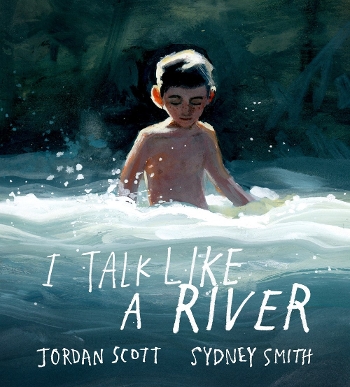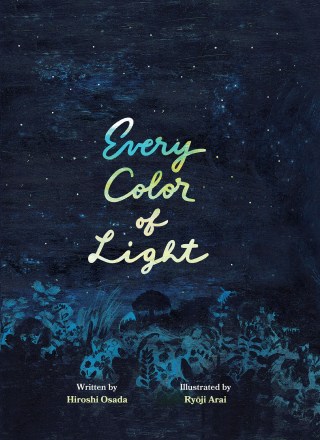Sadly, the New York Times/New York Public Library Best Illustrated Children’s Book Awards will not take place this year because of the pandemic. We here at Calling Caldecott thought we’d attempt a mock list of 2020 titles we think worthy of notice for the award, as well as ask our readers which picture books you would pick. Fair warning: there is an extra-abundance of books to consider!
JULES: Some of you may have already heard that, sadly, the New York Times/New York Public Library Best Illustrated Children’s Book Awards will not take place this year, because of the pandemic. (Here are last year’s awards if you want to take a stroll down memory lane.) I look forward every fall to this ten-book list, and I’m sorry we’ll have to miss a year — just one year, we hope — though I certainly understand why.
Back in September at 100 Scope Notes, librarian and blogger Travis Jonker — who, every year, attempts to predict which books will be named — did up his own one-man-committee post, sharing the books he thinks should have won. We here at Calling Caldecott thought we’d join in the fun, as well as find out from you, our readers, which picture books you would pick. And we have guest Julie Roach here to join us; she is Manager of Youth Services at Cambridge (MA) Public Library and was the chair of last year’s Caldecott committee. Welcome, Julie!
I can start us off by saying that I think we all agree that Sydney Smith would have been a big contender for his illustrations for I Talk Like a River, written by Jordan Scott. Martha and I made it clear in this Horn Book Q&A that we’re smitten with this one, and I included it in my CaldeNotts post. It’s an extraordinary book.

Before I hand it over to Martha and Julie, I'll add a couple more books.

I wonder if Hiroshi Osada's Every Color of Light (a Japanese import, translated by David Boyd) would have gotten the attention of this year's committee, had it convened. I say this for multiple reasons, one being that, as I understand it, the award is focused on illustrations only, and this is a book that especially showcases the talents of illustrator Ryōji Arai (winner of the 2005 Astrid Lindgren Memorial Award). This book features a stretch of land, with mountains in the background, and over it a storm passes. We then see the sun set and a shimmering full moon rise in the sky. We never leave this particular landscape, and we never meet any characters. The remarkably textured mixed media art, which communicates an almost palpable energy, features, as the title tells you, every color of light — and every mood of Mother Nature. The spread in which the "light turns everything golden" and the "water shines silver" is particularly memorable. This one is for reading slowly, reading repeatedly, and reading right before bed.

Another book this year I love for its dynamic illustrations from Cátia Chien is The Bear and the Moon, written by Matthew Burgess. Dean Schneider will visit Calling Caldecott soon to write about this one, so I won't go on and on. Chien's atmospheric illustrations feature splendid vistas with rich washes of color, and she knows when to dial it back to let the protagonist (the bear) have all the focus in ample white space. I fell hard for this book, and I'd like to think a NYT/NYPL committee would find this artwork beguiling, too.
***
MARTHA: It's interesting that the NYT Best Illustrated list — chosen by a three-person committee that always includes at least one artist — always skews heavily toward international picture books. (Even when it's just a mock exercise, as it is here, that seems to happen. For instance, two of Jules's choices above would not be eligible for the Caldecott.) And unlike the Caldecott Medal — which, though it's given to the illustrator for the art, still is arguably for the whole picture book and not JUST for the art — this committee looks solely at the art, as Jules notes. For these two reasons (in my opinion) the books named to the NYT list and the Caldecott winners rarely overlap all that much.
And yes, Jules, If I were to choose this year's NYT/NYPL Best Illustrated list, I Talk Like a River would be on it. Definitely! The art is intimate when the book calls for intimate and resplendent when it calls for resplendent. I've now said this a hundred times, but Sydney Smith manages to capture the depths of the child protagonist's inner emotions as profoundly as he captures the beauty of the natural world around him. And Smith is unparalleled at portraying the play of light on water. No artist in the world of contemporary children's literature does it better. Fight me.
As I've gone through pdf after pdf looking at picture books on screen this spring/summer/fall, it has struck me that the art in more and more picture books is objectively beautiful; hanging-on-a-gallery-wall beautiful. Maybe it's the back lighting, maybe it's an identifiable trend — I'm not sure. I'll just mention a few stunningly gorgeous picture books (in addition to Jules's choices) that have crossed my computer screen this year.

Little Wise Wolf, written by Gijs van der Hammen, illustrated by Hanneke Siemensma, is a Dutch import. The text is a leetle lessony, but the art is breathtakingly beautiful. The world created in the art is so immersive; the landscapes real but magical. If I were a kid, I might open up a particuarly inviting spread and try to jump into it. Soft colors predominate, but there is always somewhere for the eye to look, as the luminescent spreads make effective us of visual accents (especially of bright red and teal blue, both colors closely associated with the protagonist of the story, with his ubiquitous red boots and blue shoulder bag).

I know it's a science book, and I'm sure there have been precious few of those on past NYT Best Illustrated lists, but Eric Rohmann's illustrations in Candace Fleming's Honeybee: The Busy Life of Apis Melifera deserve a spot. They manage to be scientifically accurate, even in the closest of closeup views, and spectacular and dramatic. The prevailing palette of honey browns and golds is somehow never boring — just the opposite, in fact.

I'd also advocate for Antoinette Portis's A Green New Day. Not as ambitious, certainly, and not always as "painterly" as the other choices, but it's just so perfect. It's almost zenlike in its simplicity, but I could look at that picture of the tadpole at the center of a circle of ripples, or the cloud coming into cover the sun, or the lightning zigzagging through the center of a tree, all day long.



I find it hard to limit my choices. I could also make a case for Christian Robinson's You Matter, Rafael Yockteng's Cave Paintings, Felicita Salas's Green on Green ... and more. As I said, there seems to be an extra-abundance of striking art in picture books this year — but it's time to hand this over to the wonderful Julie Roach!
***
JULIE: Thank you both for including me, I am so pleased to be able to honor the spirit of this list with you two. The choices so far are exceptional. I’ll add three more titles that I think could have garnered one of the prestigious spots.

Respect: Aretha Franklin, the Queen of Soul by Carole Boston Weatherford and illustrated by Frank Morrison. Rich and evocative oil paintings create a continual eruption of passion and drama on the page, worthy of the book’s subject. Full-bleed, double page spreads with stylized images use color, perspective, and symbolism to bring deeper meaning and emotion to the narrative. The powerful imagery of the family coming up out of the roots of a tree on a rainbow-hued background becomes more powerful still when it is replicated again later without Aretha Franklin’s mother included. As Franklin matures from child to adult, the art provides closer views of her face, which evolves but continually reflects deep strength and conviction. Shaped like an album cover, the book captures the sense of energy behind the music through the components of the art.

Hike by Pete Oswald. Starting with the cover, this book’s design capitalizes on the height of its aspect ratio, showing parent and child scaling the title of the book like a mountain, each letter reflecting a snapshot of the day’s adventure waiting inside. The visuals bring readers into this wordless journey, and the composition of each page captures and intensifies the natural landscape, the physical demands of the hike, and the special relationship between father and child. The two characters start in their home, which is placed low on the page, but as the story goes along, they keep heading upward. The perspective shifts from page to page, and light, shadow, color, and the horizon line all play important roles in bringing visual drama and meaning to the story. As the two fall asleep on the last page over a new entry in their family album, the memories of the day surround them.

Neighbors by Kasya Denisevich. In a first-person narrative, a child who has moved to a new apartment ruminates about the doings of the neighbors, but the ink drawings bring the possibilities to life. Fine lines with meticulous details show a cross-section of the apartment building. The moments captured — someone celebrating, someone misbehaving, someone kissing, someone reading on the toilet, rats scurrying underground — create intrigue. Then the occupants and their habits shift to accommodate the imagination of the protagonist, who stands out in red in a sea of enjoyable black-and-white details. The scene morphs from the mundane to the fantastical to the deserted to the void, leaving the child all alone in the universe. When the child finally makes a real connection with a neighbor, another color is introduced, and all the color in the schoolyard shows that more real connections will be made in this visually captivating consideration of life in the city. The endpapers frame the book in the small black-and-white, cracked hexagon tiles from the hallway, but employing the book’s effective use of color to create meaning, there are also a handful of colored tiles interspersed on the closing endpaper.
***
So many compelling and beautifully illustrated books this year. It's hard to choose. Had the committee convened, we would not have envied their task!
Readers, which books would you choose?
ALREADY A SUBSCRIBER? LOG IN
We are currently offering this content for free. Sign up now to activate your personal profile, where you can save articles for future viewing.








Add Comment :-
Comment Policy:
Comment should not be empty !!!
Lisa Osterman
What amazing contenders you’ve highlighted. My second graders are rooting for OUTSIDE IN. During this wild year of uncertainty, the poetic language and mesmerizing illustrations highlight the importance of nature in our lives. Even when we were trapped inside, nature snuck in and offered hope!Posted : Dec 03, 2020 06:56